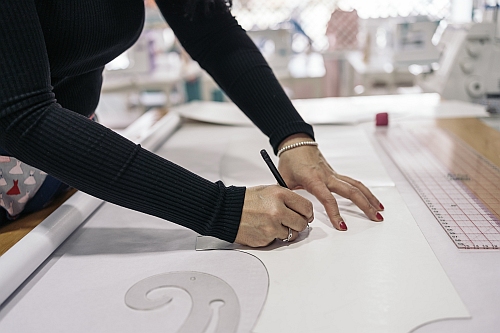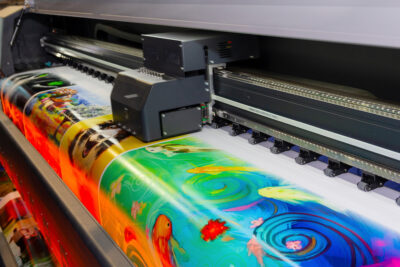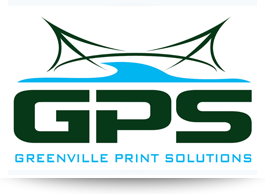Adapting to the Future: How Traditional Large and Small Format Printing Companies Will Thrive

The printing industry is undergoing a profound transformation, driven by technological advancements, environmental pressures, and evolving customer expectations. Traditional large and small format printing companies, which specialize in everything from billboards and banners to brochures and business cards, face unique challenges and opportunities. To remain competitive, these businesses must adapt strategically. Below, we explore how traditional printing companies can navigate the future landscape.
1. Embracing Digital Printing Technologies
While traditional offset printing has been the backbone of large and small format printing, digital printing is rapidly becoming the preferred choice due to its versatility and efficiency. To stay
 relevant, traditional printers must integrate digital solutions.
relevant, traditional printers must integrate digital solutions.
- Hybrid Workflows: Combining offset and digital printing allows companies to handle both high-
- volume runs and short, customized jobs. For instance, large format printers can use digital
- presses from industry leaders like HP for smaller, personalized signage projects.
- Variable Data Printing (VDP): Small format printers can leverage Variable Data Printing (VDP) to offer personalized marketing materials, such as direct mail campaigns with tailoredmessaging, increasing customer engagement.
- Upgraded Equipment: Investing in high-speed inkjet or UV printers enables faster turnarounds and the ability to print on diverse substrates, from vinyl for large banners to specialty papers for brochures.
By adopting digital technologies, traditional printers can cater to the growing demand for on-demand, customized print solutions while maintaining their expertise in high-quality production.
2. Prioritizing Sustainability
Sustainability is no longer optional; it’s a customer and regulatory requirement. Traditional printing companies, often reliant on resource-intensive processes, must adopt eco-friendly practices to align with market expectations.
- Eco-Friendly Materials: Switching to recyclable or biodegradable substrates, such as FSC-certified papers, or PVC-free vinyl for large format prints, appeals to environmentally conscious clients.
- Sustainable Inks: Using soy-based, water-based, or UV-curable inks reduces harmful emissions and aligns with green standards.
- Waste Reduction: Implementing lean manufacturing principles, such as precise inventory management and recycling programs, minimizes waste in both large and small format production.
By showcasing a commitment to sustainability, printers can attract eco-conscious brands and comply with tightening environmental regulations.
3. Expanding into New Markets and Services
To offset declining demand for traditional print products, companies must diversify their offerings and tap into emerging markets.
- Large Format Innovations: Large format printers can explore growth areas like vehicle wraps, architectural graphics, and experiential installations for events. These high-margin products require specialized skills that traditional printers already possess.
- Small Format Niches: Small format printers can expand into packaging, such as custom boxes or labels, which are in high demand due to the rise of e-commerce.
- Value-Added Services: Offering design, finishing, or fulfillment services can differentiate traditional printers from online competitors. For example, providing AR-enabled print products, where customers scan a poster or flyer to access digital content, adds interactivity.
Diversification allows printers to capture new revenue streams while leveraging their existing infrastructure.
4. Leveraging Automation and AI
Automation and artificial intelligence are transforming print shop operations, enabling traditional companies to improve efficiency and reduce costs.
- Automated Production: Robotic systems for cutting, binding, or mounting large format prints streamline workflows, reducing labor costs and errors.
- AI-Driven Optimization: AI tools can analyze job data to optimize print schedules, predict equipment maintenance, or suggest cost-effective materials.
- Customer-Facing Automation: Online ordering portals with automated quoting and proofing systems make it easier for clients to place orders, especially for small format jobs like business cards or flyers.
By investing in automation, traditional printers can compete with online print platforms that prioritize speed and convenience.
5. Building an Online Presence
The rise of e-commerce has shifted how customers source print services. Traditional printers must establish a robust online presence to remain competitive.
- User-Friendly Websites: A professional website with an intuitive interface for uploading designs, selecting specifications, and tracking orders is essential.
- Integration with E-Commerce Platforms: Small format printers can partner with platforms like Shopify to offer print-on-demand products, such as personalized stationery or promotional materials.
- Digital Marketing: Using SEO, social media, and targeted ads can help traditional printers reach new customers. The U.S. Small Business Administration (SBA) offers valuable guides on marketing for local businesses.
An online presence not only expands market reach but also caters to younger, tech-savvy clients who prefer digital ordering.
6. Upskilling the Workforce
The transition to new technologies and services requires a skilled workforce. Traditional printing companies must invest in training to stay ahead.
- Technical Training: Employees need expertise in operating digital presses, 3D printers, or AR software for both large and small format applications.
- Design Expertise: Offering in-house design services adds value and strengthens client relationships, as effective graphic design is crucial for marketing success.
- Customer Service Skills: As competition grows, exceptional customer service—whether for a small batch of flyers or a massive billboard—sets traditional printers apart.
A well-trained team can adapt to new tools and deliver innovative solutions, ensuring long-term competitiveness.
7. Forming Strategic Partnerships
Collaborating with other businesses can help traditional printers expand their capabilities and market reach.
- Technology Partnerships: Partnering with software or equipment providers can provide access to cutting-edge tools, such as cloud-based print management systems.
- Local Business Alliances: Working with local agencies, event planners, or retailers can secure steady orders for large format signage or small format marketing materials.
- Sustainability Networks: Joining industry groups focused on sustainable printing, like the Sustainable Green Printing Partnership (SGP), can enhance credibility and provide access to eco-friendly suppliers.
Partnerships enable traditional printers to scale operations without significant upfront investment.
Conclusion
Traditional large and small format printing companies face a dynamic future, but they are well-positioned to adapt by leveraging their expertise and embracing change. By investing in digital technologies, prioritizing sustainability, diversifying services, and building a strong online presence, these businesses can thrive in an evolving market. The key is to blend the strengths of traditional printing—quality, craftsmanship, and reliability—with the innovations driving the industry forward. For printers willing to adapt, the future holds exciting opportunities to redefine their role in a digital-first world.
Whether you need vibrant large format banners or personalized small format brochures, Greenville Print Solutions is your trusted partner in the Upstate. We’re ready to help your business thrive in a digital world. Learn more about our innovative printing solutions at Greenville Print Solutions.
Share this article!
